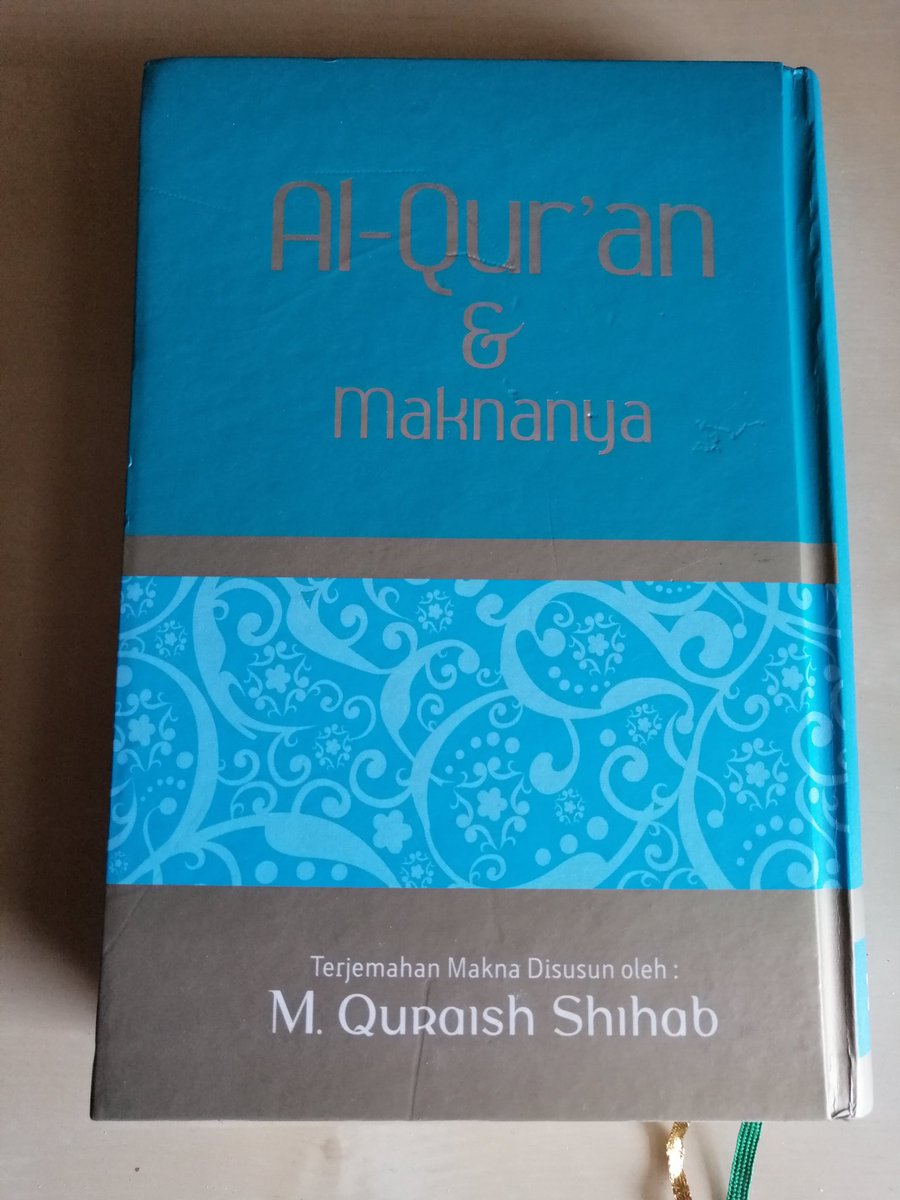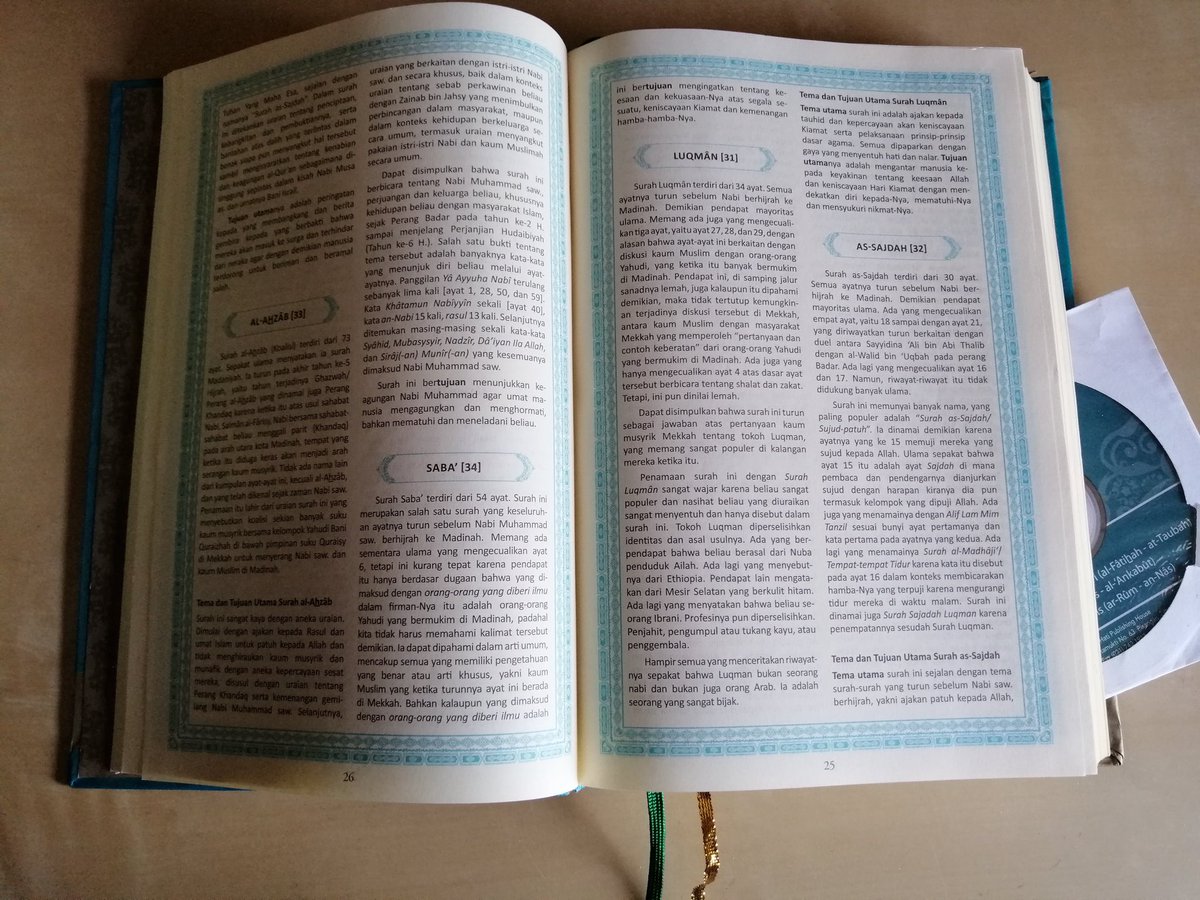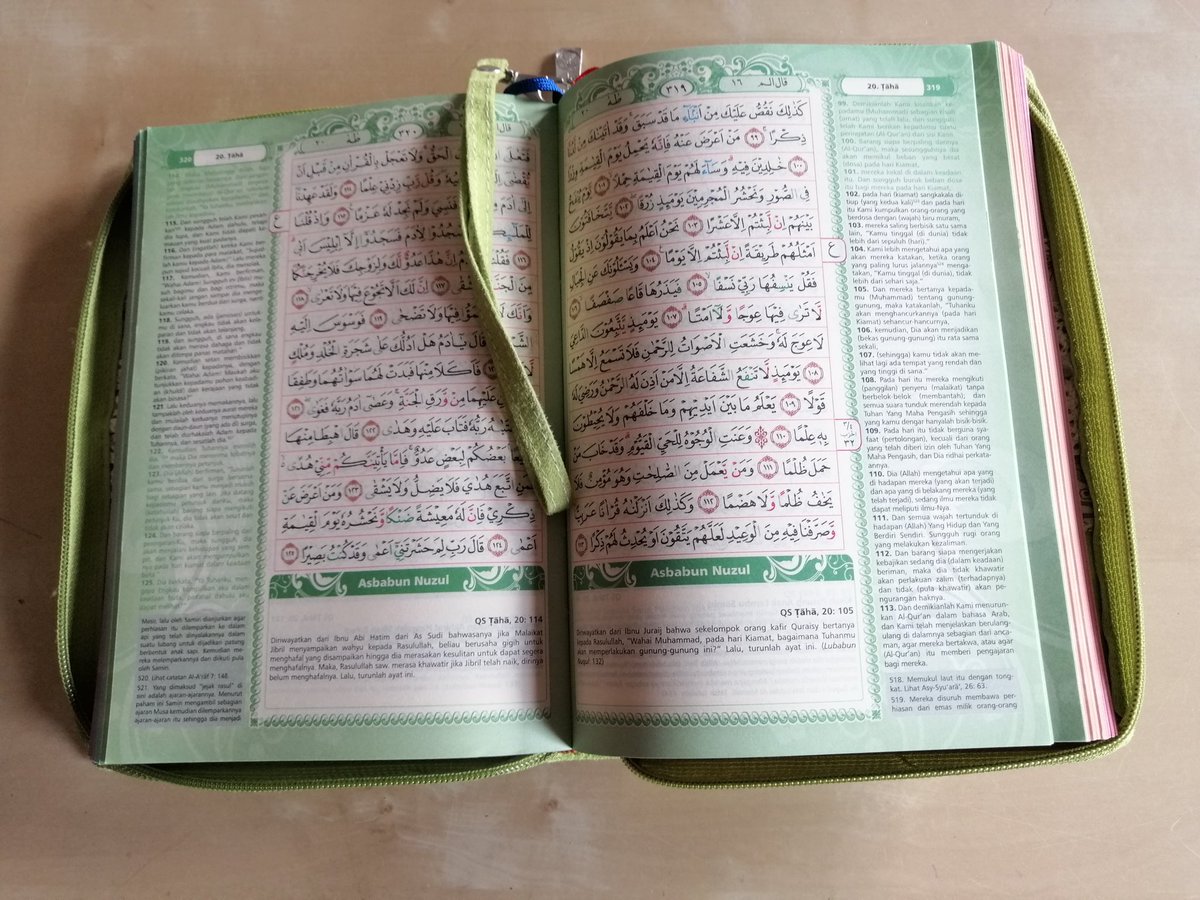
The “Bhâsa Madhurâ” (Madurese) translation of the Qur’an is one of many vernacular translations of the Qur’an in Indonesia.
#qurantranslationoftheweek 🌏🇮🇩
Guest thread by Ulya Fikriyati, Institut Ilmu Keislaman Annuqayah (INSTIKA) Guluk-Guluk Sumenep
#qurantranslationoftheweek 🌏🇮🇩
Guest thread by Ulya Fikriyati, Institut Ilmu Keislaman Annuqayah (INSTIKA) Guluk-Guluk Sumenep

The island of Madura is located immediately to the northeast of Java. The Madureseconstitute the fifth most populous of Indonesia’s 1,340 recognised ethnic groups, and Madurese is the second most widely spoken language in East Java.
The majority of Madurese people identify as Muslim. Most of the older generation are able to read the Qur’an even if they do not know the Roman alphabet. Unfortunately, the ability to read the Qur’an doesn’t necessarily entail the ability to understand it.
It was this state of affairs that inspired a collaborative venture to translate the Qur’an into the Madurese tongue in the early 2000s, resulting in the publication of the first edition of “Al-Qur’an Tarjâmah Bhâsa Madhurâ” (“The Qur’an, Translated into Madurese”) in 2006. 

This Madurese translation of the Quran is important for two reasons. First, the Indonesian language is becoming increasingly dominant in daily conversation among Madurese people. Translation into Madurese is part of a wider strategy aimed at perpetuating the language.
Secondly, the Madurese language has three distinct registers, which means that different people are addressed differently based on social hierarchy. Such linguistic expressions of social hierarchy are absent in Indonesian translations of the Qur’an.
Therefore, Indonesian Qur’an translation feels tasteless to older Madurese people. To them, Indonesian just does not have the same level of intimacy and deference when speaking about God as is found in high Madurese.
The first complete translation of the Qur’an into Bhâsa Madhurâ was published by the Jamaah Pengajian Surabaya (JPS, “The Surabaya Congregation of the Qur’anic Recitation”) in 2006 under the auspices of the late KH. Abdullah Sattar Madjid.
A second, revised edition of the text was published in 2012 by the Lajnah Penerjemahan dan Pengkajian Al-Qur’an (LP2Q, ‘The Committee of Qur’anic Translation and Studies’), based on a workshop that had discussed revisions and improvement.
“Al-Qur’an Tarjâmah Bhâsa Madhurâ” is a translation from the original Arabic, rather than from Indonesian or another language. However, although it presents itself as a translation, it is perhaps better described as an interpretation of the Qur’an.
For example, we can find various additions and explanations of an exegetical and sometime theological nature worked into the text that are not mentioned in the original Arabic text of the Qur’an.
According to the Foreword, the translators took recourse to many works of classical Qur’anic exegesis, especially “Tafsīr al-Jalālayn”, and also to the Indonesian Qur’an translation published by the Ministry of Religious Affair of Indonesia.
The Madurese edition is presented in two columns with the Arabic text on the right and the Madurese translation on the left. The Arabic font resembles that used in the old style of muṣḥaf published in Indonesia, which originated from publications produced in Mumbai.
One particular feature of this translation is the dynamic interaction between the Arabic text and the local tradition at work in the text. This is most evident in the use of the registers that indicate social status and hierarchy in the Madurese vernacular.
The Qur’an itself never differentiates people in the light of their social class: speaker and interlocutor are equal in Arabic vernacular, whoever they are. Madurese vernacular, however, uses three levels of language depending on the social status of the speaker and addressee.
These language levels give the Madurese translation of the Qur’an a unique flavour. For example, in Q 2:216, differing language levels are used to distinguish between God and His creatures.
The verb “to know” (ʿalima) is translated as “ngaghâli” when it refers to God and as “tao” when it refers to humans since “ngaghâli” only refers to someone with high social status, while “tao” is commonly used for those with a low social status.
In the conversation between God and His angels related in Q 2:32-33, when the angels answer God’s challenge to tell Him the name of all things He has created, qālū (“they said”) is translated as mator.
When God speaks to the angels in the following verse, qāla (“He said”) is translated as ngoca’. Again, different words are used because of the difference in social status between God and the angels. However, there are no differences found in the context of humans.
Sometimes the Madurese translation deviates from Qur’anic grammar and syntax in favor of idiomatic Madurese. For example, every occurrence of “We” that refers to God, using the pluralis maiestatis, is translated by the capitalized singular form Sengko’, which means “I”.
In contrast, the occurrence of “we” in relation to humans, angels, or devils is translated verbatim in the Madurese plural form. This accords with the main aim of this project, which is to provide an accessible translation aimed at the general Muslim believer.
The consistent use of Sengko’ is an uncomplicated reading that supports the basic Islamic tenet of the oneness of God without exploring the question of why the One God sometimes speaks in the plural form, an issue which is much discussed in many classical tafsīr works.
The Madurese Qur’an demonstrates that vernacular translation of the Qur’an does not just entail a transfer of the text from one language to another, but also provides a medium for dialogue between the holy text and the local tongue.
Vernacular translations of the Qur’an make the Qur’an more approachable and easier to understand in the light of local culture and knowledge.
By speaking to people in their own language, they create a context in which the reader feels that the Qur’an is addressing them too, and was not just revealed to Arabs.
#qurantranslationoftheweek 🌏
~UF~
#qurantranslationoftheweek 🌏
~UF~
• • •
Missing some Tweet in this thread? You can try to
force a refresh











